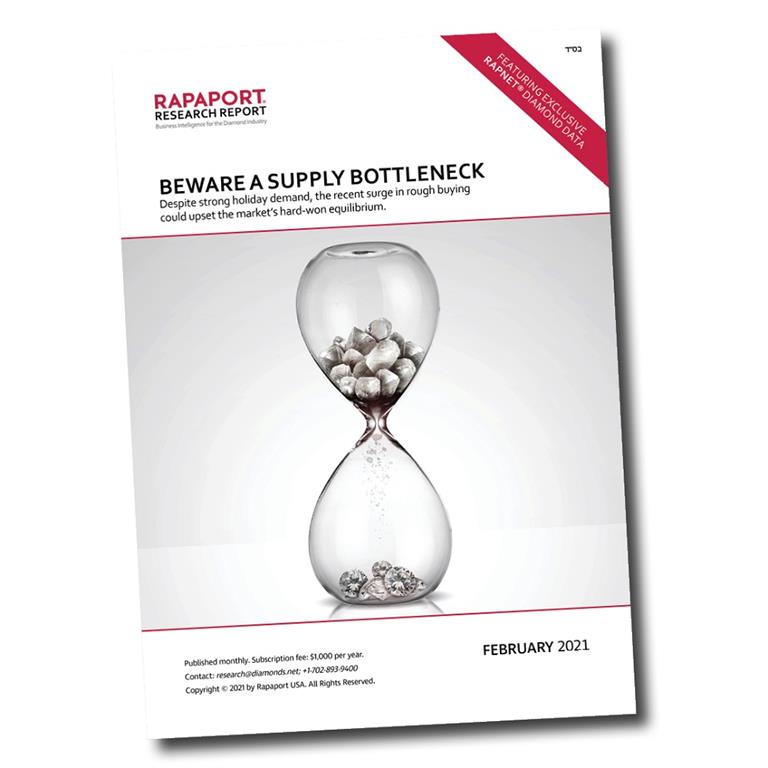The positive sentiment the diamond market experienced during the past few months was a welcome change from the gloomy tone that characterized 2020. Buoyed by holiday sales that proved better than expected, the trade gained the confidence to buy again, even with activity limited mostly to online platforms.

For the first time in many years, polished suppliers struggled to fill orders due to shortages during the fourth quarter. Just a year earlier, the midstream was plagued by what seemed to be a chronic oversupply that pushed down polished prices and caused profit margins to tighten. Among the few benefits of the Covid-19 lockdowns was that manufacturers were forced to freeze rough purchases, stop production, and start depleting the excess inventory they had.
With fewer goods available, it was understandable that the rough market would wake up again in the fourth quarter. The resurgence was a remarkable one, too: The combined volume of De Beers’ and Alrosa’s rough sales rose 57% year on year to 23.9 million carats in the final three months of the year. That’s more carats in a quarter than the two have sold since the beginning of 2017 — itself an anomaly period that arguably fueled the ensuing oversupply crisis.
The positive momentum continued into the new year with reports of sizable rough sales last month. De Beers notched its largest sight in three years, while Petra Diamonds and Mountain Province continued to see good demand at their tender sales, with prices up 8%.
In the February issue of the Rapaport Research Report, we consider the question of whether the strong rough sales are a product of polished demand or of the low supply that typified the market earlier in 2020. It could be both. What’s certain is that the rough market must cool in the coming months or risk throwing the industry back into a polished-oversupply scenario.
Such an event would undo the hard work that went into restoring an equilibrium between the rough and polished markets. It would also fuel skepticism about the stated intention — by miners, manufacturers and retailers alike — of ensuring the diamond market becomes demand driven and more efficient in its operations.
Now, at the start of February 2021, the industry is at a crossroads. Manufacturers must curb their rough purchases to maintain the balance we’ve achieved in recent months and ensure a sustainable recovery. While the holiday season was relatively positive for the industry, global diamond jewelry sales have not yet returned to pre-pandemic levels and are unlikely to do so this year. For now, this means the recovery remains a supply-driven one, and the industry needs to walk the fine line between caution and its enthusiasm to do business again.
Source: Diamonds.net










